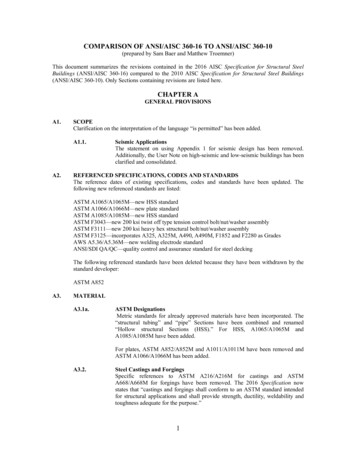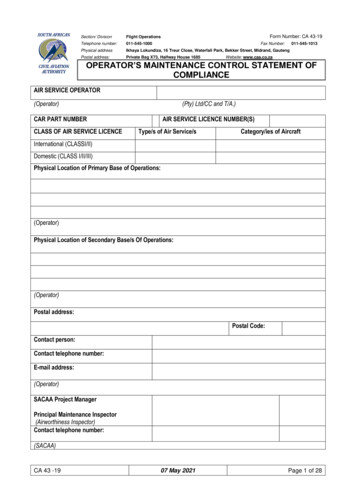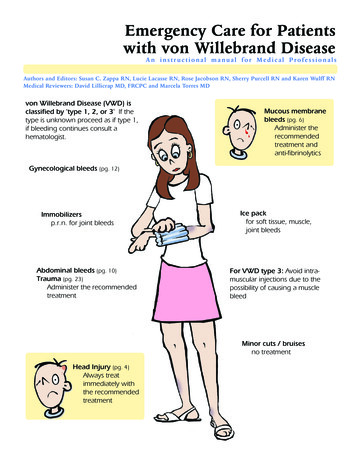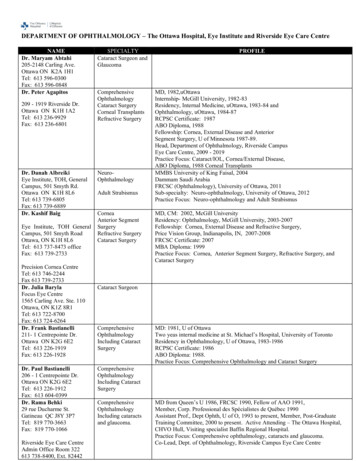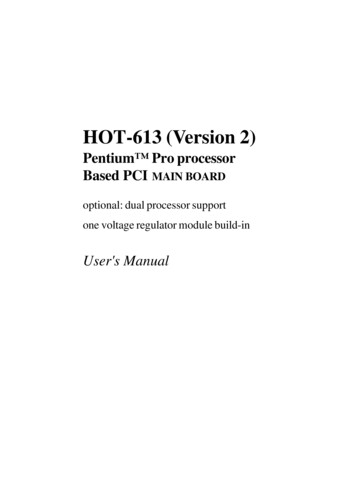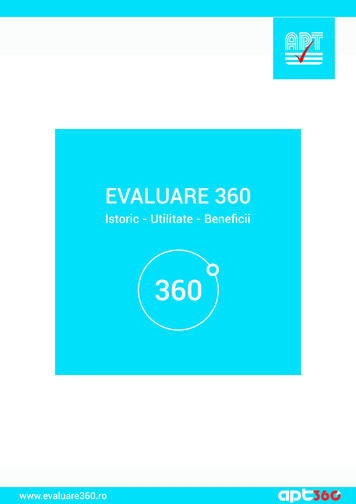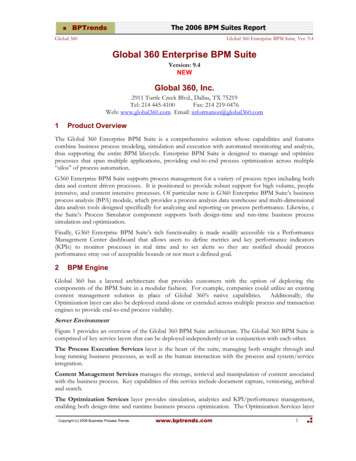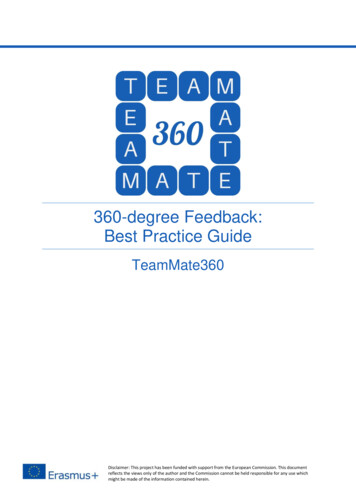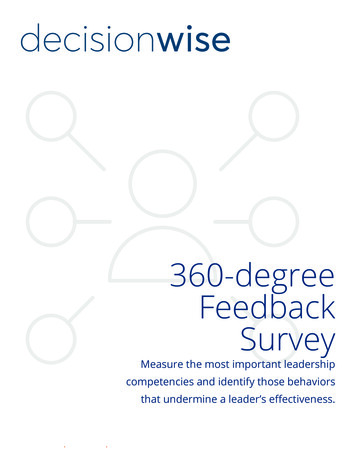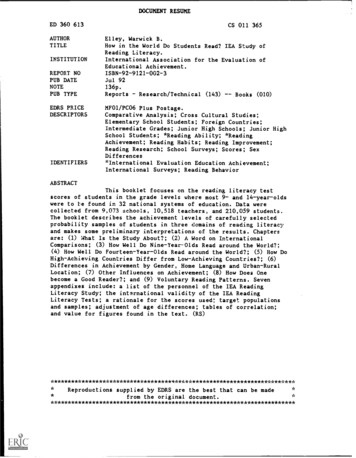
Transcription
DOCUMENT RESUMEED 360 613AUTHORTITLEINSTITUTIONREPORT NOPUB DATENOTEPUB TYPEEDRS PRICEDESCRIPTORSIDENTIFIERSCS 011 365Elley, Warwick B.How in the World Do Students Read? IEA Study ofReading Literacy.International Association for the Evaluation ofEducational Achievement.ISBN-92-9121-002-3Jul 92136p.ReportsResearch/Technical (143)Books (010)MF01/PC06 Plus Postage.Comparative Analysis; Cross Cultural Studies;Elementary School Students; Foreign Countries;Intermediate Grades; Junior High Schools; Junior HighSchool Students; *Reading Ability; *ReadingAchievement; Reading Habits; Reading Improvement;Reading Research; School Surveys; Scores; SexDifferences*International Evaluation Education Achievement;International Surveys; Reading BehaviorABSTRACTThis booklet focuses on the reading literacy testscores of students in the grade levels where most 9- and 14-year-oldswere to te found in 32 national systems of education. Data werecollected from 9,073 schools, 10,518 teachers, and 210,059 students.The booklet describes the achievement levels of carefully selectedprobability samples of students in three domains of reading literacyand makes some preliminary interpretations of the results. Chaptersare: (1) What Is the Study About?; (2) A Word on InternationalComparisons; (3) How Well Do Nine-Year-Olds Read around the World?;(4) How Well Do Fourteen-Year-Olds Read around the World?; (5) How DoHigh-Achieving Countries Differ from Low-Achieving Countries?; (6)Differences in Achievement by Gender, Home Language and Urban-RuralLocation; (7) Other Influences on Achievement; (8) How Does Onebecome a Good Reader?; and (9) Voluntary Reading Patterns. Sevenappendixes include: a list of the personnel of the IEA ReadingLiteracy Study; the intltrnational validity of the IEA ReadingLiteracy Tests; a rationale for the scores used: target populationsand samples; adjustment of age differences; tables of correlation;and value for figures found in the text. ************************Reproductions supplied by EDRS are the best that can be madefrom the original ******************************
akA.BEST COPY AVAILATIU"PERMISSION TO REPRODUCE THISMATERIAL HAS BEEN GRANTED BY0PAPITIIENT OF EDUCATIONRsearch and ImprovementOItiEdEDUCATIONAL RESOURCES INFORMATIONCENTER (ERFC)\4' M"ATh4 00Cum11ftt Pill Win nsproduccl asrevolved from Int parson or orpanizatononerneting itO Minor chimps Pews ow mum to ilargOVUltaiNaChOn QualityTO THE EDUCATIONAL RESOURCESINFORMATION CENTER (ERIC)"Plants 01 WO* Of oprmons stated on Pus clocu-Meta 00 not necssardy raprosenI ottrc,sIOERt Manton a poky/14.1III1a'II
HOW IN THE WORLD DO STUDENTS READ?IEA STUDY OF READING LITERACY
THE LEA STUDY OF READING LITERACYTICE STUDY IN BRIEFCountriesIn 1990-1991 thirty-two school systems were involved in the LEA ReadingLiteracy Study. Participating in the study were:Belgium (French) G.1700, (.N.est)BotponaGreecC4Oi4a (BC)',HoligKoagIcelandNetherlandsNew alyPortugalSingaporeSloveniaAx4ey.Demnark :FinlandRamoGermay (East)Spains SwedenSwitzerlandThailandTrinidad &TobagoUnited StatesVenezuelaZimbabweData was col:ected from a very large number of schools, teachers and students.The size of tit; study can be seen from the total numbers involved.1590-1991Population APopulation 18Students93,039117,020210,059Target PopulationsPopulation A: All students attending school on a full-time basis at the gradelevel in which most students aged 9:00-9:11 years were enrolledduring the first week of the eighth month of the school year.Population B: All students attending school on a full-time basis at the gradelevel in which most students aged 14:00-14:11 years wereenrolled during the first week of the eighth month of the schoolyear.Testing ProgramAll students took reading tests for two sessions totaling 75 minutes at thePopulation A level and two sessions totaling 85 minutes at the Population Blevel.QuestionnairesAll students responded to a background questionnaire about their reading atnome and at school. Teachers and school principals responded to questionnairesabout themselves, their teaching and the school organization. Each NationalCenter completed a National Case Study Questionnaire.BEST COPY AVAILABLE
W WICK B. ELs.iAlIEA STUDY OF READING LITERACYThe International Associationfor the Evaluation of Educational AchievementJuly 1992.)
IEA HeadquartersSweelinckplein 14NL-2517 GKThe HagueThe NetherlandsCover by Weidmiiller DesignPrinted for IEA in Germany byGRINDELDRUCK GMBH, HamburgArtOnLine, HamburgSecond printingISBN: 92-9121-002-3lv
PREFACEIn the late 1950s a group of leading educational research workers met in Englandand at the Unesco Institute of Education in Hamburg to discuss commonproblems in the conduct of educational research. From their deliberations theyrecognized the need for a comparative research program that was empiricallyoriented and that investigated problems which were common to many nationalsystems of education. They saw the world of education as a natural laboratoryin which different countries were experimenting with different strategies ofteaching and learning. By examining the naturally occurring differences between countries in both the conditions of learning and educational outcomes,they thought it might be possible to identify the significant factors thatinfluenced educational achievement. The program of research would be bothcomparative and cooperative. Decisions were to be made through scholarlydebate and not political pressure. Members of the organization would beresearch centers and scholars with the competence to undertake survey research.For over 30 years the organization that developed from these early discussionshas undertaken a continuing program of research. This organization, formallycalled the International Association for the Evaluation of FAucational Achievement, is now commonly referred to as lEA.In 1988, the IEA General Assembly, composed of the research institutesparticipating in IEA projects, decided to undertake a study of Reading Literacy.A Steering Committee of six members was formed and a technical advisorygroup appointed. (See Appendix A for a list of study personnel.) The chairperson of the Steering Committee was Professor Warwick B. Elley from NewZealand. He is the author of this first booklet of a series and presents thepreliminary results of the study. An International Coordinating Center (ICC)was established at the Faculty of Education at the University of Hamburg,Germany, under the direction of Professor T. Neville Postlethwaite. Researchinstitutes from thirty-two systems of education participated in the study. Eachof them appointed a National Research Coordinator (NRC) to be responsible forthe day-to-day running of the study in their own countries. All conceptual andoperational decisions were made cooperatively by the Steering Committee andNRCs.The study held its first NRC meeting in November 1988. The constructionand pilot testing of instruments was conducted in the period November 1988 toJuly 1990. The main testing took place in the period October 1990 to April 1991depending on the school year in each country.The na: .,nal costs of conducting the study were borne by the researchinstitutes acting as the National Centers in each country. The international costs,amounting to US 615,000 from November 1988 to May 1992, came from theparticipating countries themselves, the MacArthur Foundation, the Mellon
Foundation, the National Center for Educational Statistics through the NationalAcademy of Sciences, the European Community, the Maxwell Family Foundation and Unesco.The study could not have been conducted without a great deal of goodwill,support, and cooperation from the National Centers involved in the study. Themembers of the Steering Committee and the Technical Advisers workedwithout financial recompense of any kind. NRC meetings were hosted by someof the National Centers.IEA thanks all of those involved for their contributions to this majorinternational investigation. In particular, IEA thanks Professor Warwick B.El ley, the author of this first booklet to emerge from the IEA Reading LiterdcyStudy. His commitment and unstinting work for the study have been enormous.T. PlompChairman of IEA
aAbout the AuthorWarwick B. El ley is Professor of Education at the University of Canterbury inNew Zealand. He has taught in both primary and secondary schools. He has aPh.D. in Education Measurement from the University of Alberta (Canada) andgained much practical experience in test construction when he was AssistantDirector of the New Zealand Council for Educational Research (NZCER) in the1970s.His research work has involved the conduct of national assessments ofachievement (including reading) in New Zealand, Indonesia, Singapore, andseveral Pacific Islands. Some of these countries were involved in the ReadingLiteracy Study.His 25 year association with the International Reading Association has givenhim insight into the world of literacy. He has won several awards for his researchon the promotion and assessment of children's literacy.He is the author of a number of books and many research reports on readingand assessment. As chairperson of the IEA Reading Literacy Study he was ableto visit nineteen of the participating countries in order to visit schools and talkto local educators.It is clear that Warwick B. Elley, with his practical knowledge, researchexperience, and international perspectives, is an eminent person in the area ofReading Literacy. IEA is pleased that he agreed to be the Chairperson of theSteering Committee and the author of this first booklet.Tjeerd PlompChairman of IEA
CONTENTSPrefaceExecutive SummaryCHAPTER ONEWhat is the Study About?CHAPTER TWOA Word on International Comparisonsvxi17CHAPTER THREEHow Well Do Nine-Year-Olds Read Around the World?11.CHAPTER FkHow Well Do Fourteen-Year-Olds Read Around the World?23CHAPTER FIVEHow Do High-Achieving Countries DifferFrom Low-Achieving Countries')33CHAPTER SIXDifferences in Achievement by Gender, Home Languageand Urban-Rural Location55CHAPTER SEVENOther Influences on Achievement65CHAPTER EIGHTHow Does One Become a Good Rc:ader?75CHAPTER NINEVoluntary Reading Patterns79References89
APPENDIX APersonnel of the IEA Reading Literacy Study93APPENDIX BInternational Validity of the IEA Reading Literacy Tests95APPENDIX CRationale for Scores Used99APPENDIX DTarget Populations and Samples101APPENDIX EAdjustment for Age Differences107APPENDIX FTable of Correlations113APPENDIX GValues for Figures in Chapters 6, 7, 8 and 9115L.x
IEA STUDY OF READING LITERACYEXECUTIVE SUMMARYThis booklet focuses on the reading literac test scores of students in the gradelevels where most 9- and 14-year-olds were to be found in 32 systems ofeducation. It describes the achievement levels of carefully selected probabilitysamples of students in three domains of reading literacy and makes somepreliminary interpretations of these results.The comparisons made in the test scores require the reader to assume that thetests were equally fair for all countries, that the tests were properly translatedandadministered, and that the student samples were comparable in age, in testmotivation, and in their approach to test-taking. Much effort was taken to ensureand to check on these possible influences. Where differences were still found toexist for instance, in mean ages comments have been made in the text andadjustments to the scores have been attempted.The following findings have emerged from the initial analyses of this surveyof achievement.1.National achievement levels.The students of FINLAND showed the highest reading literacy levels at both9 and 14 years of age in almost all domains. Students in the UNITED STATESalso produced relatively high scores at the nine-year-old level, and inSWEDEN, FRANCE, and NEW ZEALAND at the fourteen-year-old level.2.Domain profiles.The levels of reading literacy achieved in each country are highly correlatedacross all three domains, and across both age groups. However, fourteenyear-old students in CYPRUS and GREECE showed greater strength in theNarrative domain, while students in HONG K '':G, SWITZERLAND, GERMANY3.and DENMARK performed better in Document., at both age levels.Economic and social context.For most countries, the levels of reading literacy are closely related to theirnational indices of economic development, health, and adult literacy.Nevertheless, HONG KONG attained high levels of achievement at both agelevels with only average status on these developmental indices. Nine-yearolds in FINLAND and ITALY, and fourteen-year-olds ill HUNGARY, PORTUGALand SINGAPORE also achieved well above the scores expected on the basis of4.developmental indices.Home language.The students of SINGAPORE achieved high levels of 1 iteracy in spite of the factthat they were instructed in a non-native language from the beginning oftheir schooling. This finding is unexpected and potntially important.xi I
5.Age of beginning instruction.Formal instruction did not begin until age seven in four of the ten highest-scoring countries at each level. Apparently a late start is not a serious6.7.handicap in reading instruction, when judged at age nine. However, whenachievement scores were adjusted for economic and social circumstancesacross all countries, an earlier start was generally found to be an advantage.Differences between high- and low-scoring countries.Factors which consistently differentiated high-scoring and low-scoringcountries were large school libraries, large classroom libraries, regularbook borrowing, frequent silent reading in class, frequent story readingaloud by teachers, and more scheduled hours spent teaching the language.Several countries with low scores reported very little experience withformal tests, but above a threshold level, this factor was not found todifferentiate high- and low-achieving countries. At the 14-year-old level,additional factors which helped differentiate high-scoring countries fromlow-scoring countries were more general homework, more literacy resources in the school, more individual tuition, fewer non-native speakingteachers, a shorter school year, and more female teachers.Less important differentiating factors.At the nine-year-old level, no perceptible advantage was found in readingliteracy levels of countries which had high enrollment ratios in preschool,or generally smaller classes, or large numbers of multi-grade classes, orlonger school years, or policies of keeping the teachers with the same classthrotigh successive grades. While many of these policies were found8.9.regularly in high-scoring countries, the data suggest that their importancemay well be only a function of relative affluence and community factorsoutside the school.Gender differences.Girls achieved at higher levelr than boys in all countries in Population A,and in most countries in Population B. The mean difference, favoring girls,dropped fror 2 points to 7 points at age fourteen. Girls showed the largestadvantage hi the Narrative domain, and the smallest in Documents. Incountries which begin formal instruction at age five, boys showed lowerscores, relative to girls.Language differences.Children whose home language is different from that of the school showlower literacy levels in all countries at both age levels. The differencesbetween these children and speakers of the language of instruction aregreatest in NEW ZEALAND in both populations.10. Urban-rural differences.Urban children achieve at higher levels than rural children in most education systems. However, in a few highly developed countries, rural studentsshow literacy levels which are as good as, or better than their city age mates.XII
11. Importance of books.The availability of books is a key factor in reading literacy. . The highestscoring countries typically provide their students with greater access tobooks in the home, in nearby community libraries and book stores, and inthe school.12. Links with television.Television viewing occupies much of students' out-of-school discretionarytime. In a few countries large numbers of children watch TV for more thanfive hours per day. Those who watch TV often tend to score at lower levelsthan those who watch less, as a general rule. However, in a small numberof countries, children who watch for three to four hours daily have thehighest reading scores. In these countries imported films with subtitles inthe local language are often shown.13. Self-ratings.Within all countriec, good readers perceive themselves to be above averagein reading ability on the whole, but the accuracy of their judgments variesconsiderably across countries. Students of FINLAND, HONG KONG, SINGAPORE,and HUNGARY are relatively modest about their reading; students of GREECE,CYPRUS, the UNITED STATES and CANADA (BC) are relatively confident.14. Becoming a good reader.When asked how they could become good readers, students in mostcountries emphasized such factors as Liking it, Having lots of time to read,and Concentrating well. Younger students in many countries also stressedKnowing how to sound out words, especially in SPAIN and VENEZUELA, butnot in NORWAY, NEW ZEALAND and HONG KONG. The best readers in the high-scoring countries emphasized Having many good books around, Learningmany new words and Doing many written exercises. By contrast, the bestreaders in low-scoring countries stressed Sounding out the words, Regulardrill on the hard things, and Doing much reading for homework. Thesenational differences are believed to reflect variations in teaching emphases.15. Voluntary reading.The amount of voluntary out-of-school book reading that students report ispositively related to their achievement levels. This relationship is clearer atthe 9-year-old level, and in the developing countries at age fourteen.Howevet, the findings reveal an optimum level of voluntary book andmagazine reading in Population B beyond which additional reading appears not to enhance achievement as judrd by these tests.XIII
.16CHAPTER ONEWHAT IS THE STUDY ABOUT?The ChallengeTo acquire the ability to read is a fundamental human right and a basicrequirement for individual and national development in the 1990s. Yet fornearly one fifth of the earth's population, the printed word has nothing to say.The Unesco publication, World Education Report 1991, states that more than950 million adults are unable to read and write (Unesco 1991, p. 22). Moreover,educators around the world hold widely differing views about how best to teachstudents to read.In many countries phonics teaching is paramount; in a few, phonics is a dirtyword. In some systems primary school begins at age five; in others, it is delayeduntil age seven. In many nations students work systematically through commercially produced sets of graded readers; in others students are believed to learnbest through a rich and varied diet of children's literature. Teachers in somecountries insist on regular workbook exercises; elsewhere they require only thatchildren enjoy and talk about what they read. Some argue strongly for smallgroup activities; others believe children should be taught as a whole class.There are many other differences in policies between nations from thenumber of days spent in school to the training of teachers, the size of classes, thefrequency of testing, and the extent of homework, to name but a few. Many ofthese differences are debated within countries; others are nationwide traditionsand taken for granted by most educators and parents.An international study of these diverse policies is well justified in itself. Ifsuch a study also attempts to relate them to carefully devised indicators of thelevels of achievement reached in reading literacy by students in each country,it may well be able to throw important light on which, if any of these policieshave important consequences for students' progress in reading. The researchersinvolved in the study accepted this cirallenge to assess differences in thereading achievement levels and voluntary reading activities of 9- and 14-yearold students in each of 32 systems of education, and to link these differences tovariations in policies and practices across countries. It proved an awesomechallenge, and many critics of literacy assessment procedures across languagesand cultures questioned its feasibility. However, the challenge was accepted, asthe likely benefits appeared to outweigh the costs, and the results of pilot testsconducted in many of the countries greatly increased the researchers' optimismabout the viability of the project.This booklet reports the initial results of this enormous international researchexercise, the largest of its kind. The report describes and attempts to interpret theaverage achievement levels in reading literacy of some 210,000 children in 32
2What is the Study About?educational systems on every continent of the earth. For each country the reportbreaks down these outcome measures by gender, home background, nativelanguage, book resources, and other sub-groups of interest. More detailedanalyses are reported in a number of booklets and in a full international report.A separate technical report presents more technical details.The StudyHow was the study conducted?The International Association for the Evaluation of Educational Achievement(IEA), which conducted the study, is a network of national educational researchorganizations in some 50 countries. It was created in order to carry outcomparative surveys of schooling in its member countries. The IEA GeneralAssembly approved the Reading Literacy Study in 1986 and planning wasundertaken by an International Steering Committee (appointed by the IEAGeneral Assembly) with the aid of representatives from each of 35 participatingcountries, starting in Washington, DC, in late 1988. An International Coordinating Center was established in Hamburg, Germany (see Appendix A for personsinvolved in the study).The Steering Committee, consisting of researchers from six countries,proposed the major aims and guidelines. These were modified and extended atseveral international meetings by representatives, called National ResearchCoordinators (NRCs), from each participating institution. Items for the tests andquestionnaires were generated, translated and pilot tested by these NRCs in1989-1990. After analysis of the pilot data by the research staff at the International Coordinating Center in Hamburg, the final tests were selected by theSteering Committee and NRCs in July 1990.The formal survey was conducted on scientifically selected national samplesof 9- and 14-year-olds, typically 1,500 to 3,000 pupils per country, and theirteachers in 1990-1991. The tests and questionnaires were administered understandardized conditions to the national samples in the eighth month of the schoolyear of 1990-1991. Southern hemisphere countries administered the tests sixmonths earlier to coincide with their school year.Where necessary, tests were translated into the local language under thesupervision of NRCs and according to guidelines provided by the SteeringCommittee. Two parallel translations of the tests were requested and backtranslations were asked for on sample passages and items as a check foraccuracy. Further checks were conducted by studying the patterns of itemanalysis results across countries. Layout, illustrations, instructions, and timelimits were standardized, but minor cultural adaptations were permitted to allowfor more suitable place names, people' s names, local currencies and measurement units.
What is the Study About?3What were the major aims of the study?As in earlier IEA studies, the Steering Committee gave priority to the task ofsurveying achievement levels in comparable samples of students in eachcountry. The first aim then, accepted by all, was to determine the average levelsof reading literacy of representative samples of all students in the grades wheremost 9- and 14-year-olds were to be found. These two groups were calledPopulation A and Population B respectively.This aim is the focus of this report. Why choose the grade levels of 9- and 14-year-olds? An earlier IEA study of reading achievement in 15 countries(Thorndike 1973) had chosen 10-year-olds as the first population to be surveyed. However, the author suggested in hindsight, that a younger age mighthave been more fruitful. It might well allow the identification of importantfactors associated with learning to read. The age of 14 years was set as the mostsuitable for the survey of older students because it was found to be the final yearof compulsory schooling in many countries. Thus it represented the level ofachievement in literacy likely to be attained by school leavers in these countries.Such levels represent the quality of reading to be expected in the next generationof citizens.Other aims adopted by NRCs, some of which are reported on in laterpublications, include the following:To describe the voluntary reading activities of 9- and 14-year-olds;To identify differences in policies and instructional practices in reading,and to study the ways in which they relate to students' achievement andvoluntary reading:To produce valid international tests and questionnaires which could be usedto investigate reading literacy development in other countries;To provide national baseline data suitable for monitoring changes inreading literacy levels and patterns over time.What is reading literacy?For the purposes of the study, reading literacy was defined as:. . the ability to understand and use those written language formsrequired by society and/or valued by the individual.Such a definition was found to be general enough to accommodate thediversity of traditions and languages represented in the participating countries,but specific enough to provide some guidance for test construction. Writingability was deliberately excluded from the definition, and only a minimalamount of writing was required of students throughout the testing process. Theemphasis on language forms required by society reflects the concept offunctional literacy and coping with reading tasks frequently encountered in anorganized society reading notices, newspapers, maps. graphs and governmentcirculars. However, a broader definition was required to meet the needs of many
4What is the Study About?National Committees who argued for the inclusion ofl-igher-level thinking andthe interpretation of narrative prose and magazine articles. Hence the additionalnotion of materials valved by the individual. While the majority of NRCsfavored an emphasis on both understanding and use, the constraints of masstesting, standardized conditions, traditional policies, and limited school time inmany nations, made it imperative that the major stress be placed on understanding. Nevertheless, it was found possible to measure students' ability to followdirections in a few tasks.The major domains or types of reading literacy materials to be included inthe final tests of both age levels were as follows:I. Narrative prose: Continuous texts in which the writer's aim is to tell a storywhether fact or fiction. They normally follow a linear time sequence andare usually intended to entertain or involve the reader emotionally. Theselected extracts ranged from short fables to lengthy stories of more than1,000 words.2.Expository prose: Continuous texts designed to describe, explain, orotherwise convey factual information or opinion to the reader. The testscontained, for example, brief family letters and descriptions of animals aswell as lengthy treatises on smoking and lasers.3.Documents: Structured information displays presented in the form ofcharts, tables, maps, graphs, lists or sets of instructions. These materialswere organized in such a way that students had to search, locate and processselected facts rather than read every word of continuous text. In some cases,students were required to follow detailed instructions in responding to suchdocuments.Other forms of classifying reading tasks were investigated and are used whenappropriate in other publications of this series.The TestsWhat form did the tests take?In order to demonstrate their levels of reading literacy, students had to read abalanced sample of each of the three types of materials, and answer questionsto show how well they could understand and/or use them. The expository anddocument materials were drawn from typical home, schoolsociety or workcontexts, with a somewhat greater emphasis on the school. From the outset, itwas agreed that test scores would be reported separately for each of the threedomains Narrative, Expository and Documents.Another type of task, a Word Recognition Test, was added for the 9-year-oldstudents. This task required students to match simple, individual words with acorresponding picture (selected out of four), and was administered underspeeded conditions. It provided weaker students with a task they could manage,and was designed to show whether weaknesses observed in reading comprehen-
5What is the Study About?sion in a group of students could be attributed to their inability to decode quicklywords of high familiarity.One way to produce a clear operational definition of the nature of readingliteracy, as interpreted in this study, is to present a two-way blueprint of the testsclassified by domain (Table 1.1).Table 1.1. Two-way blueprint of tests by domain.Population A9- s440*22562123Population B14- ear-olds55929263489196615Total*The Word Recognition items were not included in the analysis ofthe main setof test items.What kinds of test items were used?Students in most countries were familiar with the multiple-choice format andthis type was pref
AUTHOR Elley, Warwick B. TITLE How in the World Do Students Read? IEA Study of. Reading Literacy. INSTITUTION International Association for the Evaluation of. Educational Achievement. REPORT NO ISBN-92-9121-002-3 PUB DATE Jul 92 NOTE. 136p. PUB TYPE Reports Research/Technical (143) Books (010) EDRS PRICE MF01/PC06 Plus Postage.
